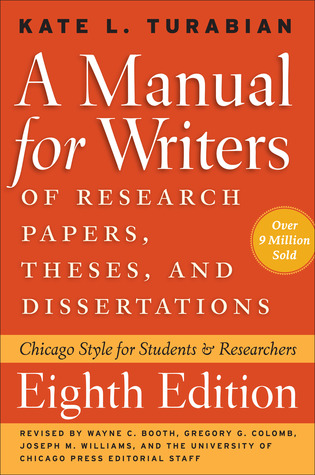Two Types of Turabian
Turabian citation offers two different forms. Make sure you know which type of Turabian you are supposed to be using:
Turabian Options:
- Notes-Bibliography Style -- a.k.a Humanities; Footnotes; Endnotes (Ch. 16-17 in A Manual for Writers)
- Author-Date Style -- a.k.a Parenthetical; Reference List (Ch. 18-19 in A Manual for Writers)
What is the difference between the two?
Notes-Bibliography typically uses footnotes. A footnote for a book looks like this:
1. Malcolm Gladwell, The Tipping Point: How Little Things Can Make a Big Difference (Boston: Little, Brown, 2000), 64–65.
Or, shortened form:
2. Gladwell, Tipping Point, 71.
Author-Date cites within the text, not in a footnote, and it looks like this:
(Gladwell 2000, 64–65)
What if all you see is the bibiliography or reference list entry? Look for where the date (e.g. 2013) is placed.
Notes-Bibliography puts the year at the end of the publication information, like this:
Gladwell, Malcolm. The Tipping Point: How Little Things Can Make a Big Difference. Boston: Little, Brown, 2000.
Author-Date puts the year right before the title, like this:
Gladwell, Malcolm. 2000. The Tipping Point: How Little Things Can Make a Big Difference. Boston: Little, Brown.
Citation & Formatting Web Resources
When using an automatic citation generator, it may contain errors (like punctuation or capital letters in the wrong place, or missing info). Always check your results against the manual.
- Turabian Quick-guide, 9th Edition, officialGives note, short note, and bibliography examples for the most common types of citations.
- Regent Writing Center Formatting ResourcesIncludes an overview of each style's highlights, a formatting checklist, and a sample paper.
- Contact Regent's Writing Coaches for Help!Online drop-in hours, email, and phone.
Turabian Manual
 A Manual for Writers of Research Papers, Theses, and Dissertations by Call Number: LB2369 .T8 2013Publication Date: 20188th Edition
A Manual for Writers of Research Papers, Theses, and Dissertations by Call Number: LB2369 .T8 2013Publication Date: 20188th Edition
The library owns this book in paper form.
Copies available for check out, in reference, and on reserves at the resource desk.
Theology Supplement
Your guide to writing quality research papers: For students of religion and theology by
Call Number: BL41 .V94 2014Publication Date: 2014